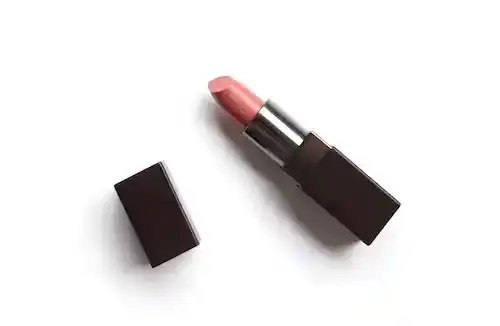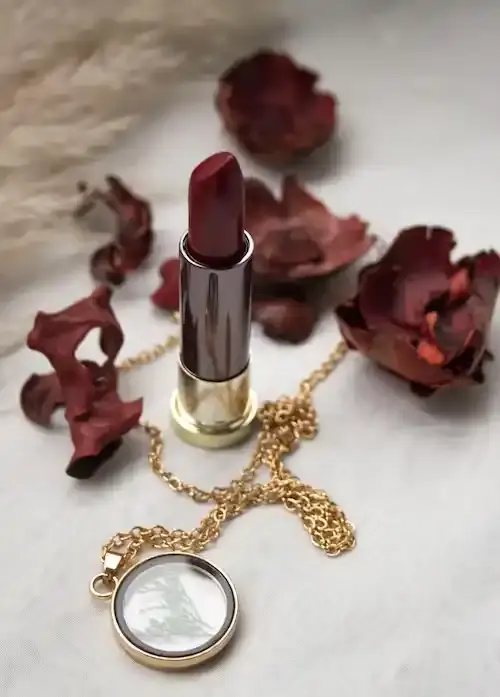Yes, there are likely scales (fish skin scales) in your lipstick.
Yes, although this question may seem very strange, believe it or not, scales (fish skin scales) have been for years a fairly common ingredient in cosmetics.
Show key points
- Fish scales, particularly those containing the protein guanine, are used in cosmetics like lipstick, eyeshadow, and nail polish to create a shiny, iridescent effect.
- Guanine reflects light from multiple angles due to its crystalline structure, which gives products a pearlescent, glowing appearance.
- Historically, fish scales were used to simulate the luster of pearls in fake jewelry, which later translated to their use in enhancing the visual appeal of cosmetics.
- ADVERTISEMENT
- Aside from makeup, fish scale derivatives can also be found in personal care items such as shampoos, conditioners, shower gels, and facial cleansers.
- Although guanine is considered safe, some cosmetic ingredients like talc can be contaminated with asbestos, raising serious health concerns if not properly regulated.
- Ethical considerations lead some consumers to avoid cosmetics containing fish scales or other animal derivatives, despite their low health and environmental risks.
- Alternatives such as mica and titanium dioxide offer plant-based, cruelty-free options for achieving similar shimmering effects in beauty products.
The shine found in lipstick, eyeshadow or nail polish is often obtained from salted herring, and can actually be thanks to ground fish scales (hint: look for the chemical name Guanine or CI 75170 in the product ingredient list).
Guanine — a protein with a crystal-like structure — can provide an iridescent effect that adds the luster we crave so much in our products.
Why are fish scales put in lipstick?

If you're a lady, you've probably dipped your lips at some point in fish scales. (If you're a gentleman, you've probably pressed your lips against those scales.) Why? Because it looks beautiful. And because of physics.
Recommend
In order to understand why fish scales are first used in makeup, we need to understand why they are used outside of makeup. In centuries past, respectable ladies may not have worn makeup, but wore jewelry. How frustrating it was, then, to discover that they often couldn't afford to buy jewelry. Help was coming: savvy raw materials scientists discovered that they could use fish scales to simulate pearls.
Pearls have a kind of scattered luster, as if they are lit from the inside, and this is because they are, especially when fake beads are made by painting ordinary beads with fish scales. Scales are made up of purines, which also make up nucleic acids. Purines are arranged in flat and irregular crystals, such as window glass fragments. When clusters of them are arranged on top of each other, the light when it hits the plane of each crystal reflects some of it back, and others continue to descend until it reaches another crystal. When light is thrown, in a scattered manner, from many different levels, the scales appear to emit light from within. Apply enough layers on the bead, and you get a pearlescent glow quality.
If it's good for a bead/pill, it's also good for lipstick. The colors of light-colored and pearl lipsticks have changed over the years, but the main ingredient used to make them has not changed: the crystals, which do the same thing as a fake pearl (and a real fish): they reflect light from many different angles and levels, making the lips appear to sparkle with inner light. Fish scales may not be a romantic ingredient, but they are available and non-toxic. Given that it wasn't long after it was discovered that some brands of lipstick were contaminated with lead, the little fish doesn't look that bad.
What makeup products use fish scales?

In addition to being found in some lipsticks, eye shadows and nail polishes, it has been found in some shampoos, conditioners, shower gels and even facial cleansers.
Guanine is obtained from fish scales, which means that some mascaras contain animal derivatives. Guanine is usually added to mascara to give it a shiny, iridescent quality. However, it has become more common for brands to opt for the phytochemical bismuth, made up of chlorine oxide, instead.
What other unusual ingredients can be found in beauty products?

According to experts, scales and fish scales are not the only thing we should pay attention to when applying makeup. Asbestos can sometimes find its way into some makeup products through contamination during the supply or manufacturing process.
Asbestos is a natural mineral that may be present in the open Talc, a common ingredient used in cosmetics. Open mines can be located near asbestos deposits, leading to the possibility of cross-contamination. If appropriate quality control measures and tests are not implemented, asbestos fibers may inadvertently contaminate the open used in the production of makeup.
WebMD supports this, saying that "the open is a metal that is extracted from the ground. Because it is so good at absorbing moisture and reducing friction, cosmetics companies often use it in baby powder, blush, eye shadow and other products."
"There have been some concerns in recent years about whether shot, especially in its powder, can cause cancer and whether it contains asbestos, a known toxic substance."
This means that it is more important than ever to verify that the beauty product brands we use are registered companies and adhere to all health and safety standards.
Although fish scales are considered low risk for allergies, cancer and the environment by the Environmental Working Group, lovers of cruelty-free products may still prefer cosmetics that do not have a side of fish scales.
Other unusual animal-related products that find their way into beauty products include the compound allantoin (cow urine) and gelatin (made from the bones and ligaments of cows and pigs).
Fortunately, mica and titanium dioxide provide plant-based alternatives that are not derived from animals, and many major brands have noticed this.








